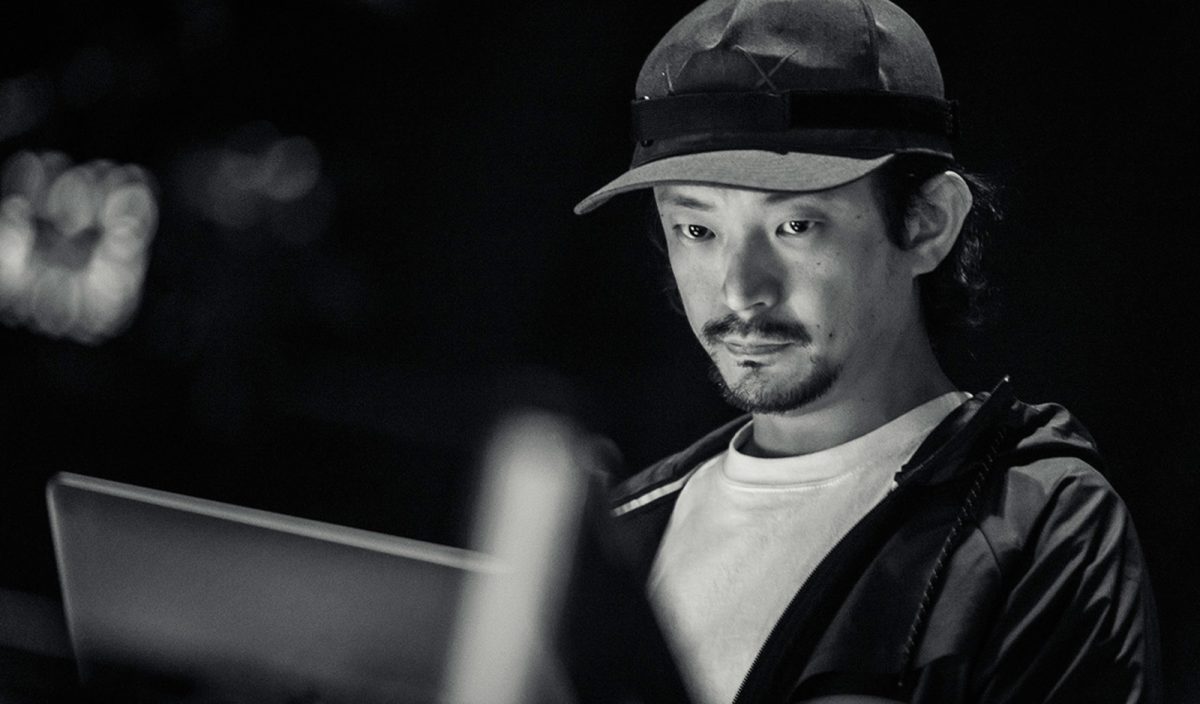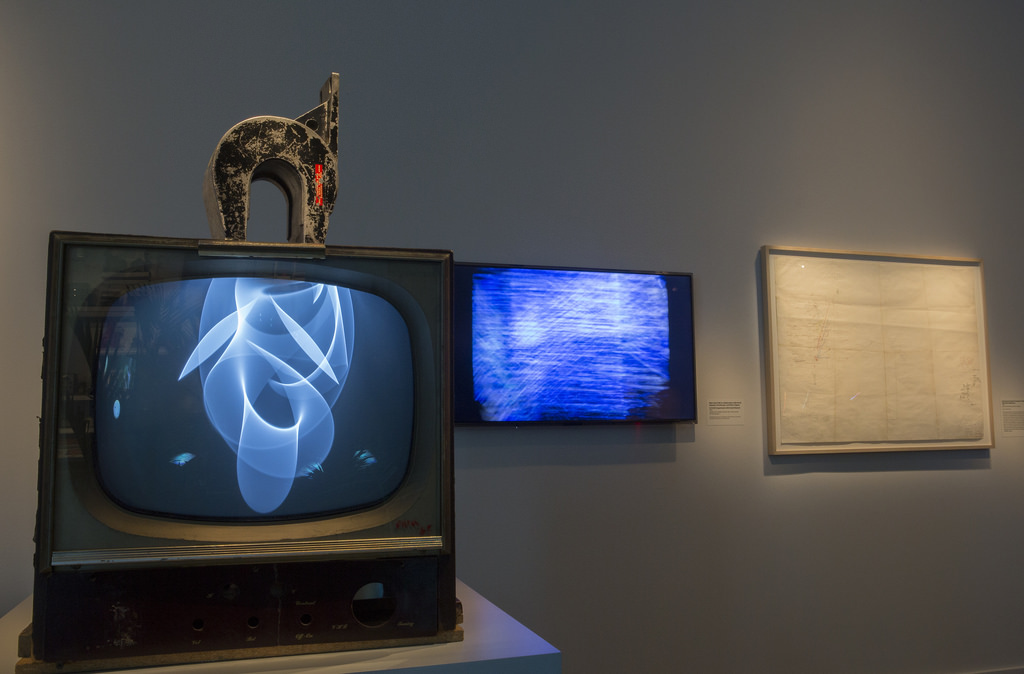Daito Manabe (まなべだいと) is a Tokyo-based interaction designer, programmer, DJ and new art media artist. Launched Rhizomatiks in 2006 which committed to effecting wide-scale social change by bridging the gulf to foster collaboration between media art, industry, and business. He was also selected as one of the 11 most influential people by Apple celebrated 30 anniversary of Mac mark with website tribute in 2014. In addition to high-quality, high-premium and multiple sensory-style performances, his practice is informed by careful observation to discover and elucidate the essential potentialities inherent to the human body, programming, computers and other phenomena.
Music- the medium of human and machine
Daito is also the key creative and technical director of Perfume (Japanese pop girl group) and Elevenplay (Japanese dance troupe). His past works were highly relevant to music, such as concert or music video filming, and were consisted of professional dancers and cutting-edge technology with bright rhythm and futuristic sound effects. Moreover, the performances rarely have any speech and word. Maison de la Culture du Japon à Paris (MCJP) held Fertile Landscape welcoming Daito also talked about his artistic practice. Reprinted from the interview:
If I had wanted to express myself with words, I probably would have become a singer or a writer. The reason I chose music as the medium for expression precisely was that I did not want to use words. That is because I was attracted to the universality of things that are not words.
The music video, “Cold Stares”, is one of his works to present how Daito thought of the relationship among music, human and machine. This video is the collaboration between Daito Manabe and Los Angeles beatmaker, Nosaj Thing featuring Chance The Rapper in 2015. The dance piece by two dancers was produced to express the message in the lyrics—their mental situation and conflict searching for the reason of being and memories, wandering along the border between reality (the real world performed by people) and illusion (the delusional world of Computer Graphics Effect). In the design of performance, Daito frequently utilized each beat and bridge of the music to alternate the real and virtual realities, thereby creating a scenario that dancers and drones mutually support and communicate with each other. The audience seems to be drifting on a virtual-to-reality space with the rhythm of music through the six shots installed on the drones, and sometimes is in a short distance but far away from the performers. Besides, it may be discovered that the virtual reality is filled with a considerable amount of minimal polygon and glitch art. The dirty media artist Jon Cates talked about his approach and inspiration of glitch art in the interview with Randall Packer:
It should be extended to considerations about other aspects of our society beyond art, in which we ignore those who don’t fit into our social ideals of perfection and worthiness.
Unlike Jon Cates took advantage of the glitch to create the imperfections, errors and the aberrations remaining people to face this “problem”, Daito’s glitch presents the essence of the machine and differentiates the real and the virtual world in this work. Each glitch was arranged on the beats and camera movements perfectly. Jon Cates provokes the conflict and contradiction, but this work rather aims to encourage the cooperation between human and glitch. The interview and official website have more details of this work.
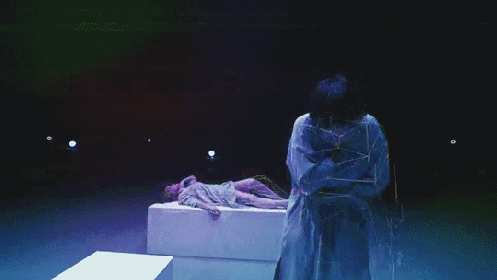
Anthropomorphism- Machine-as-human
In Daito’s numerous works, it could be further discussed how he handles the relationship between human and machine. Fly, one of his works in the series of drones created in 2015. The three drones are arranged three-dimensionally in real space through a tracking technology and control system, and the work, in which dancers give performances to find the possibility of a new bodily expression. Working through a set of cameras with motion capture, dancers can physically and intuitively perceive the relationship between the body and data through the computer-controlled drones.
We are constantly experimenting and thinking of ways to create a new form of dance performance by utilizing technologies such as machine and deep learning
Like Daito said, he successfully created a duet dance attended by human and machine by this work. In the first three minutes of the performance, the drones played a supporting role and kept up with the dancer’s movement, but they were able to move individually with the music in the following time as the dancers left. This solo was like to resort to the rhetoric that they are exactly alive and do not doubt their existence to the audience. Anthropomorphism is commonly considered to be the quaint and archaic activity of people far removed in time and place from the complex functioning of contemporary technological society. But anthropomorphism is widespread in modern life, so common that we take it for granted and fail to react to its peculiarity (Caporael, 1986). “When I give an order to a machine, the situation is not essentially different from that which arises when I give an order to a person” Norbert Wiener said in his book, Cybernetics in History. When modern human are used to living with artificial intelligence, Daito dropped a bombshell which reminds us do not forget ignoring the existence and possibility of the machine. However, rather than the majority of sci-fi movies or theories which narrate machine will eventually rule the earth, the author considers that Daito aims to accomplish a co-prosperity of human and machine by this work.
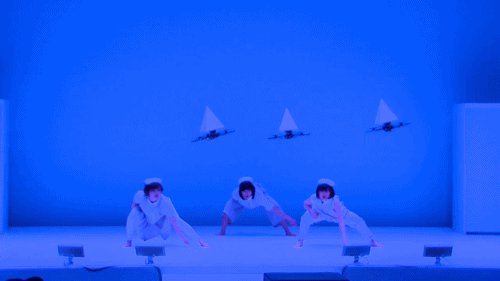
Mechanomorphism- human-as-machine
If anthropomorphism, referring to machine-as-human, is one face of the human machine, we might allow “mechanomorphism,” the human-as-machine, to be its other face. Mechanomorphism is the attribution of characteristics of machines to humans (Caporael, 1986). Thus, Motion, one of Daito’s work, could be a classic example of mechanomorphism. This performance was shown at an Electric Company’s Opening Ceremony in 2015. Integrating the industrial robots and dancers, it aims at making the audience feel and imagine the harmonization of human and robots.
Interestingly, compared with Fly (the previous example), this work has a completely opposite performance that the industrial robots acted alone at the beginning but the dancers joined afterwards. If the purpose of Fly is to express the soul of the machine, the piece could be seen as a demonstration how human get along with these souls. The audience may be attracted in the first half of performance that each robot handed over the cube to another and worked in cooperation, but the fascinating part should be the human dancers acted along with the robots. Nowadays, human always lead the machine and bring them life, but no one can guarantee that the situation may be completely different someday like the dancers mimicked the robot motions as machine-like dance. Nonetheless, the most impressive part is the consistent performance of human and robots (like the below image shows). The piece not only performed human-as-machine choreography but also convey what the mentality of people see machine should be in the future. In this interview, Daito also mentioned that how he is inspired by technology:
No matter how much machinery and algorithms advance, you can re-motivate them creatively in service of a new idea. That process is a lot of fun. I think it is going to become more important that humans have better faculties of judgement when inputting information.
Read more details of this work.
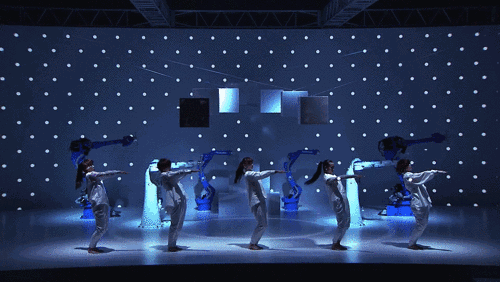
In summary, Daito’s works invite a further reflection of human and machine regarding conflict, contradiction and collaboration. However, unlike Ant Farm’s Media Burn which reminded people about the power of media by the mass destruction, Daito Manabe gives a series of perfect and remarkable human-machine performance for his audience as positive as he meets machine.
What I want to do is not claim that art has the power to change the world, and then just leave the problem alone after raising the question. For example, instead of just raising the question of the danger of drones and exhibiting such documentation, it is possible to demonstrate with a prototype. I am not interested in some roguish style of assuming influence and trendiness but then staying far away from solving anything.
-Daito Manabe
Reference
Caporael, L. R. (1986). Anthropomorphism and mechanomorphism: Two faces of the human machine. Computers in Human Behavior, 2(3), 215-234.
